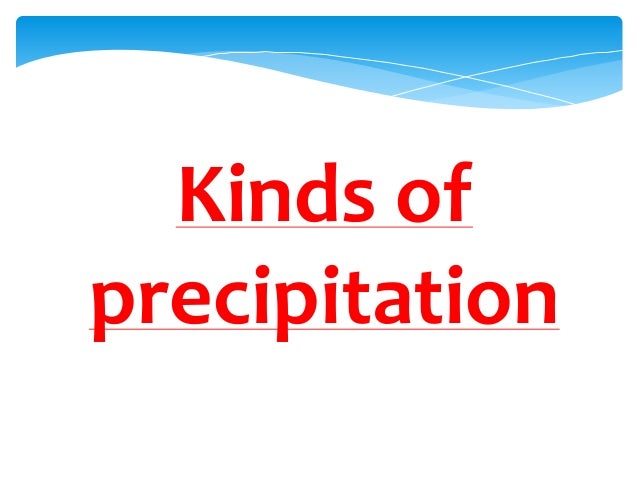Precipitation
 Precipitation
is water released from clouds in the form of rain, freezing rain,
sleet, snow, or hail on the Earth's surface . When air is lifted in the
atmosphere, it expands and cools and leads to the formation of clouds.
The clouds floating overhead contain water vapour and cloud droplets,
which are small drops of condensed water. For precipitation to happen,
first tiny water droplets must condense on even tinier dust, salt, or
smoke particles, which act as a nucleus. Some vapour freezes into tiny
ice crystals which attract cooled water drops. The drops freeze to the
ice crystals, forming larger crystals known as snowflakes. When the
snowflakes become heavy, they fall as it exceeds the cloud updraft
speed. When the snowflakes meet warmer air on the way down, they melt
into raindrops.
Precipitation
is water released from clouds in the form of rain, freezing rain,
sleet, snow, or hail on the Earth's surface . When air is lifted in the
atmosphere, it expands and cools and leads to the formation of clouds.
The clouds floating overhead contain water vapour and cloud droplets,
which are small drops of condensed water. For precipitation to happen,
first tiny water droplets must condense on even tinier dust, salt, or
smoke particles, which act as a nucleus. Some vapour freezes into tiny
ice crystals which attract cooled water drops. The drops freeze to the
ice crystals, forming larger crystals known as snowflakes. When the
snowflakes become heavy, they fall as it exceeds the cloud updraft
speed. When the snowflakes meet warmer air on the way down, they melt
into raindrops.
Rainfall and Its Types
Rain is the most common form of
precipitation. When minute droplets of water are condensed from water
vapour in the atmosphere on to nuclei, they may float in the atmosphere
as clouds. If the droplets coalesce, they will form larger drops which
will be enough to overcome by gravity and will fall as RAIN to the
surface of the earth.
There are three main types of rainfall
a) CONVENTIONAL RAINFALL:
It occurs when moist air, having been
warmed by Conduction from a heated surface, expands, rises and is
adiabatically cooled to the Dew Point. Cumulus clouds develop and may
fall accompanied by Thunder.Convectional rainfall occurs commonly during
the afternoon near the equator, due to high temperature and high
humidity
b) OROGRAPHIC RAINFALL:
This type of rainfall occurs when air is
forced to ascend the side of a mountain range. When land barriers such
as mountain ranges, hilly regions or even escarpments of plateaus lie in
the path of prevailing winds, large portion of the atmospheric air is
forced to rise above these barriers. This resultant precipitation is
termed as orographic. Because the air has deposited on the windward side
of the mountain, there will normally less rainfall on the leeward side
which is known as Rain Shadow Area
c) FRONTAL RAINFALL:
 Cyclonic
or Frontal precipitation results when the warm, moist air mass (warm
front) meets a cool and dry air mass (cold front). The molecules in the
cold air are more tightly packed together (i.e., more dense), and thus,
the cold air is heavier than the warm air. The warmer air mass is forced
up over the cool air. As it rises, the warm air cools, the water vapour
in the air condenses, and forms clouds and results in precipitation.
This type of system is called Frontal Precipitation because the moisture
tends to occur along the front of the air mass
Cyclonic
or Frontal precipitation results when the warm, moist air mass (warm
front) meets a cool and dry air mass (cold front). The molecules in the
cold air are more tightly packed together (i.e., more dense), and thus,
the cold air is heavier than the warm air. The warmer air mass is forced
up over the cool air. As it rises, the warm air cools, the water vapour
in the air condenses, and forms clouds and results in precipitation.
This type of system is called Frontal Precipitation because the moisture
tends to occur along the front of the air mass



Post a Comment
Post a Comment